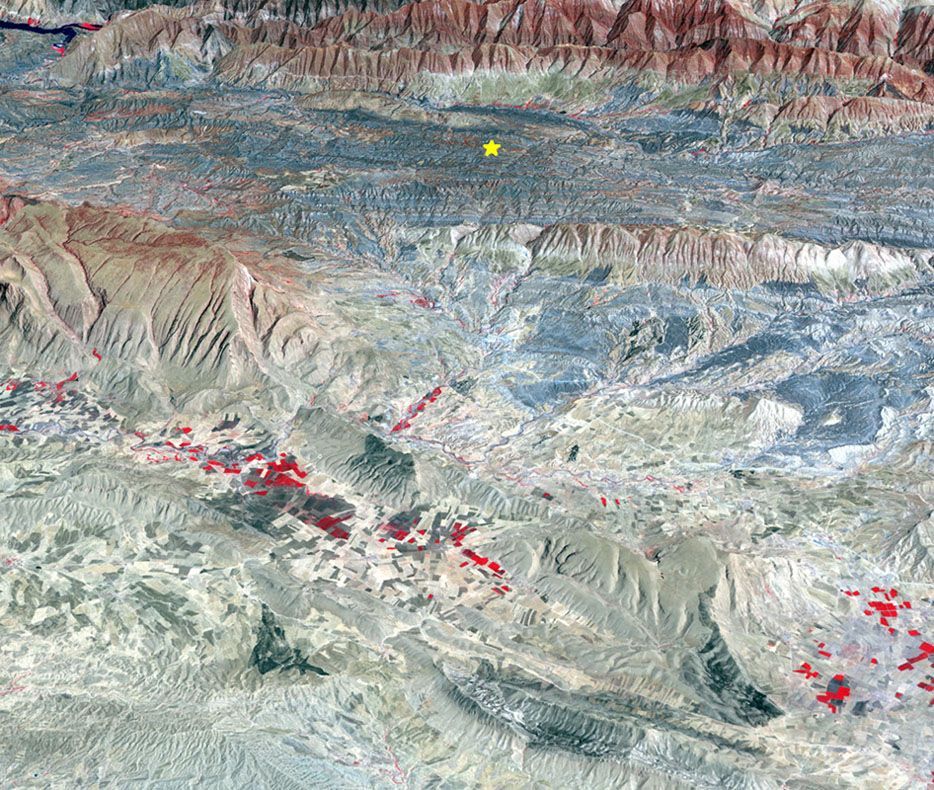On November 12, an earthquake with a magnitude of 7.3 struck Kermanshah Province in northwestern Iran, near the Iraqi border, killing more than 400 people. More than two weeks later, many people in the quake-hit regions still live in tents and makeshift shelters set up amid the rubble that was once their homes.
Cold nights and sub-zero temperatures add to the misery of the earthquake survivors living in the Iranian Red Crescent Society canvas tents. The tents are covered with tarpaulin to shelter against the frequent autumn rain. Each tent is equipped with dishes, blankets and an electric heater powered by the utility poles in the area.
Most streets and alleys in the town of Sarpol-e Zahab are in ruins. Many buildings have collapsed. Only a few people live in their homes. Most of the residents have been living in tents set up in open fields, parks and parking lots.
In the immediate aftermath of the earthquake, people from neighboring provinces rushed to the aid of the residents of Sarpol-e Zahab and other towns and villages. But now, all that remain are the banners that were put up by the local inhabitants to welcome and thank those who had rushed to help them. Now torn by the cold autumn wind, the banners hang above the deserted streets and from the utility poles on the outskirts of town.
The three slogans — “grateful people,” “a united nation” and “an absent government” — aptly summarize post-earthquake aid efforts. An old man invites visitors into his tent, set up on a pile of rubble which, until a few weeks ago, was his house. Speaking in Kurdish, he says: “Welcome. Forgive me for not being able to offer you anything. If it weren’t for the help of my fellow Iranians, I would have died, like my children. God bless you.”
Admittedly, Iranian Army search-and-rescue units and emergency response teams were at the scene of the earthquake within a short time. They provided valuable help to local residents. But they are now gone, and all that remains is a mobile military hospital. The government has been very slow in its response to the disaster. It has not announced any plans to address housing and other urgent needs of the people in the quake-hit regions.
Most houses in Sarpol-e Zahab were built with sub-standard materials. They could not withstand any earthquake, let alone one of 7.3 magnitude. Members of the Army emergency team told Kayhan London: “We are from the Army’s engineer unit stationed in Tehran. We are here to assess the damage and determine what caused the buildings’ collapse.” They said they believed that most of the houses in Sarpol-e Zahab breached the building code. “Just look at these steel beams. They were not welded properly,” one of the army officers told us.
A local resident pointed to a pile of rubble which was once a three-storey building and said: “My cousin owned that building. Eight people died when it collapsed. We pulled out the dead body of a woman, with her dead children in her arms, from under the rubble. Most buildings in this area were destroyed. They were privately built and owned.”
The villages of Karand and Islamabad were at the epicenter of the earthquake. Local farmers seem reluctant to go back to harvesting their corn crops. Oddly, some rural houses sustained minor damage, with only their windows shattered. They were originally built after the Iran-Iraq war (1980-88). The owners have been able to renovate these houses in the past 10 years through a $1,400 government family loan. It would appear that the renovation of these buildings saved hundreds of lives. But many other houses were completely destroyed.
Dalir is a local farmer, and he and his family have been living in one of the tents set up by the Iranian Red Crescent Society. “The outpouring of public support has eased the pain of losing my son. But when I’m alone, I remember the awful day when I had to pull his dead body from under the rubble that was once our house,” he told Kayhan London. “If it weren’t for people who rushed to our help, many more would have died. They came and rescued many of the residents.”
Dalir said: “We thank our brothers and sisters. They did everything for us. Our fellow Iranians showed that we are not alone. It is now the government’s responsibility to find us homes.”
In the village of Sarab, we met a young man who pointed to a pile of rubble and said: “This used to be my house. Four members of my family died here, and others were injured. They were taken to Tehran’s Milad Hospital.” He added: “We lost everything. The government has promised to give us a $7,000 family loan. What are we going to do with this money? How are we going to rebuild our lives?”
An old man in the same village said: “This reminds me of the devastation we suffered at the hands of Saddam Hussein during the war with Iraq. Our homes were leveled. It is as if Saddam and the earthquake were brothers. All we want is for the government to put roofs above our heads.”
We ran into another young man in Zahab whose clothes and hair were covered with thick dust. He hadn’t bathed in over two weeks. He told us: “We don’t have any baths or hot water. We cannot bathe with cold water. We built a makeshift toilet with cement blocks. There is no water or sewage.”
“We are not as worried about baths and toilets as we are about our future,” he added. “What can we do with $7,000? It costs twice that amount for someone to put a new kitchen in their home. How can we rebuild an entire house for $7,000?” It is unclear how the government has arrived at this figure.



